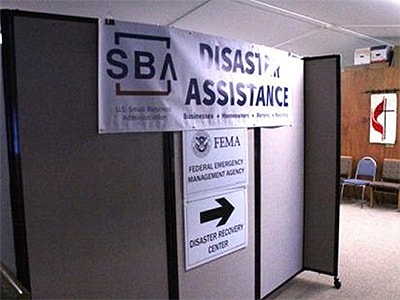The parable told in Luke 10 of “The Good Samaritan”, should challenge every congregation to ask who in the neighborhood needs mercy. This can be difficult in normal time, but after an earthquake, it becomes pretty clear: who are those in our neighborhood who are hurting? Who has experienced loss of their home? Who is feeling frightened during aftershocks? What are people struggling with as they work to clean up, repair, assess and rebuild?
After the Cook Inlet Earthquake in Alaska last year, Christ First UMC in Wasilla, Alaska started receiving calls: I need help with a place to stay. I don’t have any firewood, and my oil stove is damaged. Can I get help with food? Christ First UMC is part of the Alaska Annual Conference.

Many of our neighbors further out Knik-Goose Bay Road (KGB), and up through Settlers Bay, Big Lake, and even into Houston found themselves in remote places with little visibility and less services. While Anchorage, Chugiak, and even Wasilla were seen on the news and on the internet. Some of our more rural locations did not get as much attention.
We have a Pastor’s Discretionary Fund to help people in times of emergency. We help with rent, gas, food, or whatever people happen to need. With the increased calls after the earthquake, this fund was quickly getting depleted. We had the need, but not the resources to fill the need.
And then at the beginning of February, we got a phone call. The earthquake was just declared a federal disaster by FEMA, and they were looking for locations to set up Disaster Recovery Centers. Soon a couple of dozen FEMA employees descended on Christ First UMC to inspect it for safety, for space availability, to check cell reception, and the other qualifications of our space. While our financial resources helped a few of our neighbors, our greatest resource ended up being our building and our location.
Within a few days, FEMA had moved in but we had to make some adjustments. But these minor adjustments were worth it! As the months went by, FEMA had over seven hundred clients come through this center. These individuals, couples, or families have come to the church because they understood it as a location to get help. Neighbors from near the church, and throughout the Mat-Su Borough have been by to register for grants, loans, and other assistance offered by FEMA.
In the midst of hosting this service to the community, people have stopped and chatted. One woman mentioned how much she appreciated being able to access the services without having to drive too far. Another thanked the congregation for being willing to be there for our community. Others have expresses similar sentiment.
This has allowed the congregation to see our neighbors in a new way. Not just the folks driving by, but the friends right here with us. Shaken, but not going anywhere. Desiring mercy and looking for hope.
Rev. Daniel Wilcox, Christ First UMC.
This story represents how United Methodist local churches through their Annual Conferences are living as Vital Congregations. A vital congregation is the body of Christ making and engaging disciples for the transformation of the world. Vital congregations are shaped by and witnessed through four focus areas: calling and shaping principled Christian leaders; creating and sustaining new places for new people; ministries with poor people and communities; and abundant health for all.





